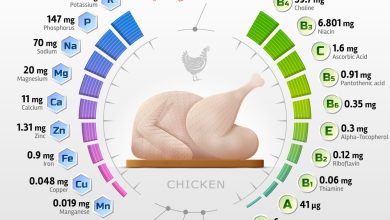Nutritional Facts You Need to Know About Chicken Thighs

Chicken thighs have long been a staple across a multitude of cuisines worldwide, cherished for their rich flavor and tender texture. From the succulent coq au vin in French dining to the spicy chicken adobo in Filipino cuisine, chicken thighs bring depth and satisfaction to countless dishes. Their versatility and affordability make them a popular choice for home cooks and chefs alike.
Understanding the nutritional facts of chicken thighs is essential for maintaining a balanced diet. While they are undeniably delicious, it’s important to know how they fit into your overall nutritional intake. This knowledge empowers you to make informed choices, balancing the mouthwatering taste with the health benefits they offer.
In this blog post, we will delve into the nutritional breakdown of chicken thighs and explore their health benefits, providing you with the information needed to enjoy this delicious cut of meat as part of a well-rounded diet.
Nutritional Breakdown
Protein Content
Chicken thighs are an excellent source of high-quality protein, providing around 21 grams of protein per 100 grams. This macronutrient is essential for muscle growth and repair, making it a key component for anyone looking to build strength or recover from exercise. The high protein content also helps in maintaining satiety, which can be beneficial for weight management.
Fat Content
While chicken thighs do contain fats, it’s important to distinguish between the types of fats present. These cuts provide a mixture of saturated and unsaturated fats. The unsaturated fats, particularly the monounsaturated and polyunsaturated fats, are considered healthy fats that can support heart health. However, it’s advisable to consume them in moderation and balance them with other nutrient-rich foods.
Calories
The caloric content of chicken thighs can vary depending on how they’re prepared. Grilled chicken thighs typically contain fewer calories compared to their fried counterparts. For instance, a grilled chicken thigh might have approximately 180 calories per serving, whereas a fried one could exceed 250 calories. Being mindful of these differences is important for managing your caloric intake, especially if you are monitoring your weight.
Vitamins and Minerals
Chicken thighs are a powerhouse of essential vitamins and minerals. They are particularly rich in vitamins B6 and B12, which play crucial roles in energy metabolism and neurological function. Additionally, chicken thighs contain minerals like zinc and phosphorus. Zinc is vital for immune function, while phosphorus is essential for bone health and energy production. Incorporating chicken thighs in your diet can thus contribute to overall well-being, ensuring you receive these critical nutrients.
Health Benefits
Supports Muscle Growth
Chicken thighs are packed with high-quality protein, making them an excellent choice for supporting muscle growth and repair. Protein is the building block of muscles, and consuming adequate amounts is crucial for anyone engaging in physical activities or looking to enhance their muscular strength. The amino acids in protein contribute to the repair and regeneration of muscle fibers, ensuring effective recovery after exercise.
Boosts Metabolism
Certain nutrients found in chicken thighs, such as B vitamins, can significantly enhance your metabolic function. Vitamins B6 and B12 are known to play vital roles in converting food into energy, thereby boosting your metabolism. A higher metabolic rate helps in burning calories more efficiently, which can aid in weight management and maintaining overall energy levels throughout the day.
Improves Heart Health
The presence of healthy fats, particularly monounsaturated and polyunsaturated fats, in chicken thighs can contribute to better cardiovascular health. These fats help in reducing bad cholesterol levels in the blood, which can lower the risk of heart disease. Including these healthy fats in moderation as part of a balanced diet supports overall heart health, making chicken thighs a heart-friendly option.
Energy Source
Chicken thighs serve as a sustainable and robust energy source, ideal for fuelling daily activities. The combination of protein and healthy fats provides a steady release of energy, preventing spikes and crashes that can occur with high-carb foods. This makes chicken thighs not only a versatile culinary ingredient but also a reliable component of a diet designed to keep you energized and active throughout the day.
Preparation Tips
Healthier Cooking Methods
When it comes to preparing chicken thighs, selecting healthier cooking methods can make a significant difference in maintaining their nutritional benefits while reducing unnecessary fat content. Opting for grilling, baking, or broiling is an excellent way to prepare chicken thighs, as these methods do not require excessive amounts of oil, thereby keeping the fat content low.
Grilling allows the fat to drip away from the meat, resulting in a leaner dish. Baking and broiling are also fantastic options, as they involve cooking the chicken at high temperatures, effectively sealing in the juices without the need for added fats. By choosing these cooking techniques, you can enjoy the flavorful and tender taste of chicken thighs while adhering to a health-conscious diet.
Flavor Enhancements
Enhancing the flavor of chicken thighs without adding extra calories is highly achievable with the right use of herbs and spices. Fresh herbs like rosemary, thyme, and cilantro can add depth and aromatic qualities to your dishes without the need for caloric-heavy sauces or marinades. Spices such as paprika, cumin, and black pepper not only bring a burst of flavor but also include health benefits, adding a layer of nutrition without unwanted calories.
Marinating chicken thighs with a blend of garlic, lemon juice, and a touch of olive oil can infuse the meat with vibrant flavors while keeping it light and healthy. Dry rubs made from a combination of spices and herbs offer another fantastic way to amplify taste without compromising on your dietary goals. By consciously choosing these flavorful enhancements, you can turn a simple chicken thigh dish into a delectable and nutritious meal.
Portion Control
Portion control is essential in maintaining a balanced diet and ensuring you get the most out of your meals. When it comes to chicken thighs, being mindful of portion sizes can help you enjoy their nutritional benefits without overindulging. Aim to include one to two chicken thighs per serving, depending on their size and your dietary needs.
Additionally, balance your plate with plenty of vegetables and whole grains to create a well-rounded meal. For instance, pairing a chicken thigh with a generous serving of steamed broccoli and a portion of quinoa can provide a variety of nutrients while keeping calorie intake in check. By paying attention to portion sizes, you can savor the deliciousness of chicken thighs while promoting a balanced and nutritious eating plan.
Common Myths
Myth: Chicken Thighs are Unhealthy
One prevalent myth is that chicken thighs are unhealthy due to their higher fat content compared to chicken breasts. However, this misconception overlooks the nutritional benefits that chicken thighs offer. While it’s true that chicken thighs contain more fat, they also provide a wealth of essential nutrients that contribute to overall health.
Scientific studies have shown that the fats found in chicken thighs include healthy monounsaturated and polyunsaturated fats, which can aid in reducing bad cholesterol levels and improving heart health. Additionally, the protein content in chicken thighs is of high quality, supporting muscle growth and repair. By incorporating chicken thighs in moderation as part of a balanced diet, you can enjoy their rich flavor and nutritional advantages without compromising your health.
Myth: Only Chicken Breast is Beneficial
Another common myth is that only chicken breast is beneficial due to its lower fat content and higher protein levels. While chicken breast is indeed a lean and nutritious choice, dismissing chicken thighs overlooks the unique advantages they offer. Comparing the nutritional profiles, chicken thighs have a slightly higher fat content, but this includes beneficial fats that support heart health and provide a more sustained energy release.
Moreover, the richer flavor of chicken thighs often makes them a preferred choice in various recipes, encouraging healthier eating habits by making meals more enjoyable. Both chicken breast and thighs contribute valuable nutrients like high-quality protein, essential vitamins, and minerals. Therefore, incorporating both cuts into your diet provides a balanced array of benefits, catering to different nutritional needs and taste preferences.
Conclusion
In conclusion, chicken thighs are an underrated yet highly nutritious part of the chicken that deserves a place in your balanced diet. They are packed with essential nutrients such as high-quality protein, healthy fats, vitamins, and minerals that support overall health.
Despite their slightly higher fat content compared to chicken breasts, the healthy monounsaturated and polyunsaturated fats in chicken thighs contribute to improved heart health and a more sustained energy supply. Opting for healthier cooking methods like grilling, baking, or broiling ensures you can enjoy chicken thighs without unnecessary added fats.
Moreover, the rich flavor and versatility of chicken thighs make them a delightful addition to various dishes, enhancing your culinary experiences without compromising on nutrition. By being mindful of portion control and incorporating herbs and spices for flavor enhancement, you can savor the benefits and taste of chicken thighs while maintaining a health-conscious diet.
So, don’t let myths discourage you—embrace the numerous advantages that chicken thighs offer and make them a staple in your nutritious and well-rounded meal plans.




